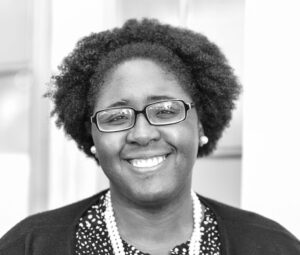
Creativity Needs Anti-Institution Institutions
CREATIVITY IS…
Learning in the theological academy needs to be liberated. It has been held hostage by standards of appropriateness authored by voices and ideologies long gone yet holding on. They can be quite static and unmoving.
The solution? Creativity. But I’m not sure if theological institutions are truly ready for her, for she asks for too much.
Within theological education, Creativity needs honesty. She requires both desire and attention to possibility as well as a sense of duty to hold failed systems of current practices accountable. She is bold and voluminous; veracious enough to name when she does not have the appropriate room to thrive.
She will, without hesitation, mention how crowded institutional elephants can make a room (no offense to elephants, they are simply not spatially conducive to a healthy theological education environment). Creativity does not hold her tongue, for limit might deter her potential. She announces how holding on to ill-fitting things and anachronistic ideas takes space away from her truest emergence. And theological education is, unfortunately, a space unaware of its spatial misappropriations. Colonial roots can do that to you.
Well, what can faculty do to welcome her into their classrooms?
“Faculty in theological education,” Creativity would say without pause, “are captives to the institutionality of teaching.”
That’s not the answer we were expecting.
“I can’t work well, here,” she would continue. “Here, I need the opposite, a spirit of the apophatic. I can tell you where something is by naming where it is not, how it is by how it is not. Here, I need partners who understand the beauty of this refusal—of crafting the necessary in the midst of a mantle of negation. I need dreamers willing to be anti-institutional within their institutions. This clash, of refining through refusing, is where I am.”
We can ask her for elaboration: “What does it mean to be anti-institution?”
“It means to be me,” she will answer with nonchalance.
“But how can an anti-institution institution exist?” we will surely press.
“Have you checked the margins?” she will rhetorically inquire.
ANTI-INSTITUTIONAL
Check the margins. What will you find? Who will you find?
Those who have historically been made the least of these. By virtue of their existence, many know Creativity and her bold requirements quite personally.
To be creative in the theological academy means to actively resist the lure of traditional institutional priorities: maintaining the status quo financially and otherwise, re-enforcing institutional standards of rigor and knowledge, and continuing in the practice of institutional “speech-acts,” as Sarah Ahmed brilliantly calls them, where institutions claim their worded hopes of inclusion, diversity, and innovation as actual truth, though the world is aware they are not.[1]
Creativity is naming where God is by illumining where God is not; remember, an apophatic spirit.
To be sure, Creativity can exist within institutions; she has for years, but has she existed well? Freely? Is she permanent dweller or occasional guest?
Is it possible, let alone desired, to make her host instead of hosted? To give her full reign of an institution?
No. She is too risky. Total creative power would mean granting room for the ways of being and knowing that have always been in the room but have only known suppression. It would mean granting those who have been forced to make the margins their homes shared space in the center. And no one with institutional influence and say is interested in giving up the center.
Creativity considers the historical pawns the priority instead of laborers towards the bottom line. The bottom line of budgets are amenable foes but not the only ones. The bottom line of certain standards of academic rigor, the bottom line of grades as the only means of intellectual analysis, the bottom line of fortifying academic structures created for the white men for whom theological education was created.
Creativity wants—no, needs—not only the space of the classroom to leave a deep impression, but say over the entire structure of the theological educational system.
Unprepared to acquiesce to such a demand, institutional heads will ask if it’s OK if she appears in the individual efforts of underpaid doctoral students, job-insecure adjunct educators, and exhausted minoritized faculty persons.
She will reluctantly agree, or more like make do, but never stop asking in a nonchalant, rhetorical, inquiring tone, “Have you checked the margins?”
There is a message in the margins: the classroom could be a space of influence—influence not synonymized as power, but a space where relationships between students and teachers, different forms of knowledge, and measures of intelligence can be reimagined. It can be a space where students’ experiences are taken seriously and where teachers do not have to take themselves so seriously.
“Have you checked the margins?”
How can the classroom become a platform for the periphery? What must be undone so that there is room for better? Many theological institutions still believe they must keep academic tradition for a church traditionally understood; Creativity instead asks, “What happens if minoritized students were the center in the classroom and institution as a whole? Do institutions want to learn their students? Do they trust marginalized experiences to be a true expression of the church universal?”
“Have you checked the margins?” then is another way of asking, “Have you asked yourself?”
[1] Sara Ahmed, “The Nonperformativity of Antiracism,” Meridians 7, no. 1 (2006): 104-126, especially 104.
Uplifting read, thank you!